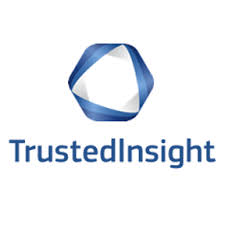 Micro VC Jim Scheinman of Maven Ventures is usually noodling on a new business idea, he tells me over coffee at The Battery, a private social club in San Francisco where various tanned VCs are seated opposite pale entrepreneurs in spacious black leather booths.
Micro VC Jim Scheinman of Maven Ventures is usually noodling on a new business idea, he tells me over coffee at The Battery, a private social club in San Francisco where various tanned VCs are seated opposite pale entrepreneurs in spacious black leather booths.
One of these ideas was “a payment platform for the social web” that Scheinman dreamed up in 2007, but because he doesn’t code, he “found two guys who were basically going to build it with me.” Scheinman says he became the company’s acting COO and first seed investor. That startup, Jambool, was acquired by Google in 2010 for a reported $70 million. (It had raised $6 million.)
Tango, a messaging company with more than 200 million users and roughly $367 million in venture backing, was also “in part, kind of my idea,” says Scheinman, an early investor in the company who says that, among other things, he came up with Tango’s name, its viral marketing strategy, and some of its early employees.
Scheinman’s newest notion is turning his current “sub $10 million fund” into a new $50 million to $100 million second fund in the next year or so with his same LPs plus an institutional investor or two. The question is whether Silicon Valley is ready for this particular idea.
A native New Yorker, Scheinman traces his investment background back the baseball cards he sold with his brother in high school. Within a few years, the two were running a multimillion-dollar business that employed 50 people, but Scheinman wanted more out of life, so not long after graduating from college at Duke University, he headed to UC Davis for a law degree, and afterward, to one startup and then another.
It was at his second startup — San Francisco-based Friendster, one of the earliest social networks — that he met married programmers Michael and Xochi Birch. As Scheinman tells it, he was looking for acquisition targets for Friendster, but he was so impressed with the Birches that he instead convinced them to make him their third employee — first at their startup BirthdayAlarm and then at Bebo.com, a social network that AOL acquired for $850 million in cash in 2008.
The sale made both Birches wealthy. (Indeed, they own and operate The Battery.) It also gave Scheinman the freedom to become an angel investor as well as raise a small fund once his angel investments began to pan out. “I’m happy to make people money and get a dinner or a thank you, but I thought, ‘Why not pool some of that money and take 20 percent?’”
Scheinman has plainly taken his role as a VC seriously. He currently backs about six companies each year, writing checks to nascent startups ranging between $100,000 and $150,000 and very occasionally investing in a Series A or B round, such as with the investing platform AngelList and Banjo, a real-time content discovery company.
Scheinman has also created a low-flying incubator that works with up to six startups that each receive a $250,000 convertible note, six to nine months of office space, ongoing help from Scheinman, and access to 20 mentors, including startup CEO coach Dave Kashen and Andy Johns, who has been a user growth manager at Quora, Twitter, Facebook and now Wealthfront. (Scheinman says the idea is to create or identify nascent consumer startups and help them scale massively. The mentors and Scheinman’s LPs receive a collective 3 percent in each startup; Scheinman gets another 3 percent.)
Scheinman claims his formula is working. On the VC side, he says he was able to take “70x” his original investment off the table earlier this year when Alibaba led a $280 million round in Tango. (He claims he still maintains most of his ownership in the company, too.)
Meanwhile, a company he incubated, Epic, a year-old, all-you-can-read e-book service for kids, has raised $1.4 million from investors, including TomorrowVentures, Webb Investment Network and Menlo Ventures.
Scheinman says the Epic concept was his, adding that he’s always happy to share his ideas, particularly if they can turn into high-growth businesses. “The way I work is I talk with everyone about an idea, because you never know who it will resonate with or who is doing something similar.”
(When I reach out to a couple of entrepreneurs who Scheinman has worked with in the past, one doesn’t respond to a Memorial Day email; another characterizes Scheinman as very helpful in the early days of his company and says Scheinman has a great consumer touch but differs with his portrayal of some of his specific contributions.)
I ask Scheinman how he would scale his operation to fit the demands of a bigger fund. In addition to bringing aboard a second GP and two associates, he says he’d lead more deals, rather than hand so many off to his network. “Most of the companies [Maven] has incubated have gone on to raise $1 million to $1.5 million. Maybe I do that check or do $1 million and bring in one other syndicate.”
Scheinman adds that he’s “not running these businesses. But I know the problems they’re going to face and I can help them avoid some of them.”
“My value proposition is simple,” he continues. “If you want to build a hyper-growth consumer business and you think I can be helpful to you, you should let me in.”
Sign up for our morning missive, StrictlyVC, featuring all the venture-related news you need to start you day.









